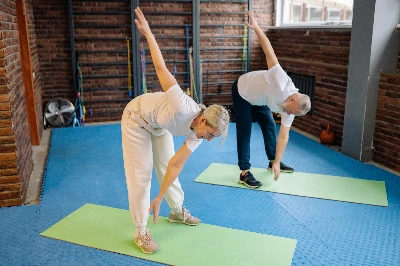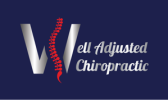The Benefits of Incorporating Corrective Exercises Into Your Workout Routine to Improve Posture, Mobility, and Strength
What is the purpose of corrective exercises?
The purpose of corrective exercises is to improve physical function and reduce the risk of injury. These exercises are designed to target specific muscle imbalances, postural deficiencies, and movement dysfunctions that can lead to pain and injury. Corrective exercises can help to restore proper movement patterns and improve the overall quality of movement.
Corrective exercises can be used to improve posture, balance, and coordination.

Who can benefit from corrective exercises?
Corrective exercises are exercises that are specifically designed to help improve a person’s posture, movement patterns, and overall physical health. They can be beneficial to people of all ages and physical abilities, from athletes to those with chronic pain or mobility issues.
For athletes, corrective exercises can help improve their performance by improving their body’s ability to move and perform efficiently.

What are the benefits of corrective exercises?
At Well Adjusted Chiropractic, we aim to blend the skills and experience we’ve acquired from both our formal education and years of serving the Holly, MI community.
Corrective exercises are exercises that are designed to help improve posture, reduce pain, and correct muscular imbalances. They can help improve overall body mechanics, reduce the risk of injury, and improve performance.
Corrective exercises can help improve posture by strengthening weak muscles and stretching tight muscles. This can help to reduce pain and improve overall body mechanics.
Where do corrective exercises fit into the overall fitness picture?
 Corrective exercises are an important part of the overall fitness picture. They are exercises that are designed to address and correct muscular imbalances, postural issues, and movement dysfunctions that can lead to pain, injury, and decreased performance.
Corrective exercises are an important part of the overall fitness picture. They are exercises that are designed to address and correct muscular imbalances, postural issues, and movement dysfunctions that can lead to pain, injury, and decreased performance.
Corrective exercises are typically used in combination with other forms of exercise and physical activity to help improve overall fitness.
How should corrective exercises be performed?
Corrective exercises are exercises designed to improve posture, reduce pain, and correct muscular imbalances. They are typically prescribed by a physical therapist or other healthcare professional and are tailored to the individual’s needs.
When performing corrective exercises, it is important to focus on proper form and technique. This means that the exercises should be performed slowly and with control. It is also important to use proper breathing techniques and to focus on engaging the correct muscles.
How do corrective exercises help alleviate pain?
Corrective exercises are a type of physical therapy that can help alleviate pain by targeting the underlying causes of the pain. These exercises focus on strengthening the muscles that are weak or imbalanced, improving posture, and restoring proper movement patterns.
Corrective exercises can help to reduce pain by improving the overall strength and stability of the body.
Get in touch today! Give us a call at (248) 328-9291 or click the button below to request your next appointment.
Corrective Exercise Facts
- Corrective exercises are designed to improve posture, reduce pain, and increase strength and mobility.
- They focus on restoring proper movement patterns and correcting muscular imbalances.
- Corrective exercises can be used to treat a variety of conditions, including back pain, neck pain, shoulder pain, and hip pain.
- They can also be used to prevent injury and improve performance.
- Corrective exercises typically involve stretching, strengthening, and balance exercises.
- They can be performed using bodyweight, resistance bands, and weights.
- Corrective exercises should be tailored to the individual’s needs and goals.
- They should be performed slowly and with proper form.
- Corrective exercises should be performed regularly to maximize the benefits.
- They should be combined with other forms of exercise, such as cardio and strength training.
- Corrective exercises should be performed under the guidance of a qualified professional.
- Approximately 80% of musculoskeletal injuries are caused by overuse and repetitive motion.
- According to a study published in the Journal of Orthopaedic & Sports Physical Therapy, corrective exercises are effective in reducing pain and improving function in individuals with shoulder impingement.
- A study published in the Journal of Physical Therapy Science found that corrective exercises can improve shoulder range of motion and strength in patients with shoulder impingement.
- A study published in the Journal of Physical Therapy Science found that corrective exercises can reduce pain and improve shoulder function in individuals with rotator cuff tendinopathy.
- A study published in the Journal of Orthopaedic & Sports Physical Therapy found that corrective exercises can improve shoulder range of motion, strength, and function in individuals with shoulder instability.

